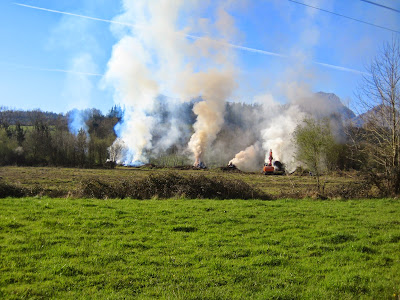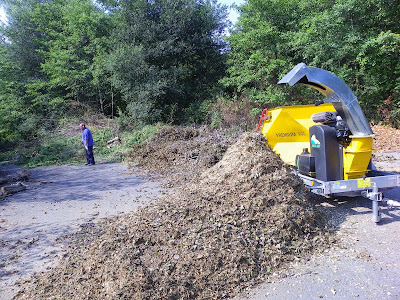Burning green and garden waste keeps on being a common practice in our society, which highlights the shortcomings of the current system and the need of more sustainable management measures.
Air quality in the Autonomous Region of the Basque Country was characterized by the impacts generated by industrial activity. However, during the last decade, public institutions have driven monitoring and improving efforts in order to change this situation. Currently the main sources of atmospheric pollutants are traffic emissions, domestic emissions and those generated by the open air burning of green waste.
The above mentioned source is mainly generated by individuals and although it is a regulated activity (even socially accepted), it represents a significant risk to the environment. In addition to emissions of particulate matter and other harmful compounds for human beings (both carbon dioxides and nitrous oxides), open air burning is causing additional negative impacts to the environment, such an increased risk of fires and further erosion of soils.

In order to minimize these open air burning activities, the implementation of advanced management systems where green waste is shredded for reuse in composting processes, is identified as a sustainable alternative. These materials have a low rate of energy use and a high level of corrosive compounds, which limits its use in biomass boilers. At this particular point, it is very important to perform a detailed diagnosis of the initial situation, which will allow to define the own specificities for a more sustainable management.
Two strategic working lines have been identified by the Sustainability and Environment Department of IK4-Azterlan for the implementation of an advanced management system for the green and garden residues. On one hand, to define new management alternative services and secondly, the implementation of specific information and awareness campaigns for citizens. Social acceptance and existing regulations about controlled burnings make this second point crucial for the correct further follow up. The responsible persons for conducting the burns should be aware of the negative impacts generated on the environment. Therefore a preferential communication to this target group is essential.
Any change in the treatment and waste management systems is a matter of social confrontation. However, institutional impetus in the recent years by the practice of self-composting activities has generated a significant demand of bulking materials (dry and soft material generated from green waste). The proper development of composting processes requires a similar amount of organic residues that shredded green waste, which means an average of 150 kg/year per family.
While there are already waste recycling centers (locally known as “Garbigunes”), this new context requires the implementation of specific treatment points for green waste, close to the rural areas or site locations where these green residues are generated. Difficulties associated to the transport of large volumes of this type of residues, along with the corresponding costs, require the preparation of new infrastructures near the main generation points. Even though burning is prohibited, it is still used as a borderline solution.
Taking all these factors into consideration, a decentralized system for the reception and further local processing is to be defined, where municipal services or subcontractors for the maintenance of green or garden areas will follow up the shredding tasks.

In this way, it is possible to achieve the dual purpose of responding to the actual demand of bulking materials and improving the environmental and air quality impacts, reducing up to 80% the number of open air burnings. In addition, this management change helps as well to reduce the greenhouse gas emissions (GHGs), since the application of compost as organic fertilizer in soils is considered a process of carbon fixation.

